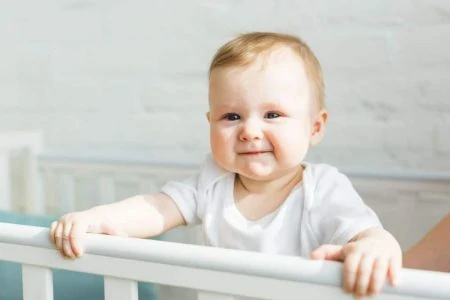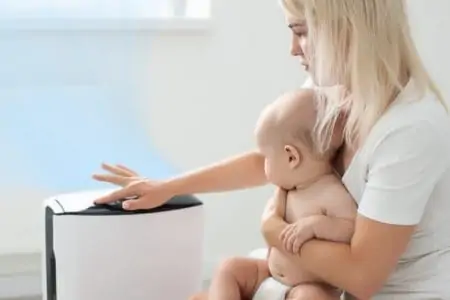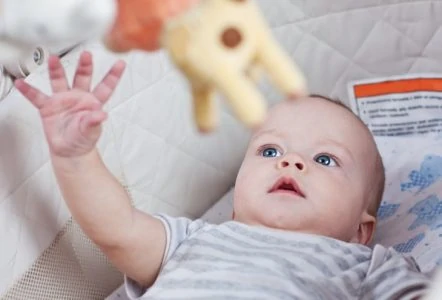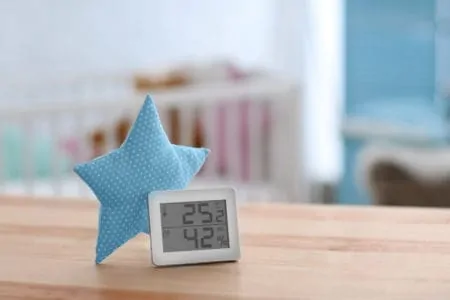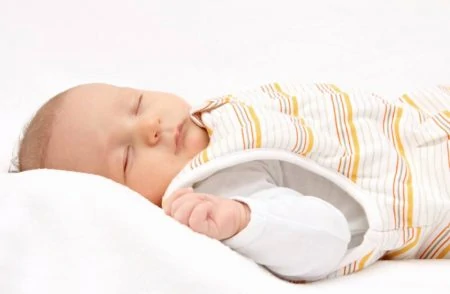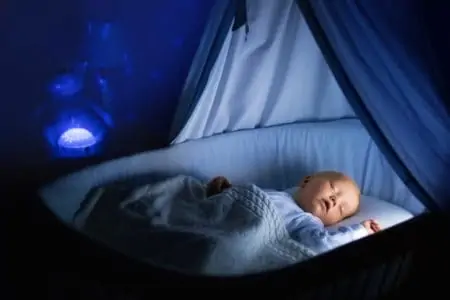Adjusting your crib mattress isn’t just about convenience for your aching back; it is a crucial safety measure that evolves as your baby grows.
We created this guide to walk you through the specifics of crib height safety. We will cover the milestones for lowering the mattress, debunk myths about inclining for reflux, and help you keep your little escape artist safe and sound.
Key Takeaways
- Always place your baby on their back on a firm, flat surface to reduce the risk of SIDS.
- Start with the mattress at the highest setting for newborns to make lifting them easier during recovery.
- Lower the mattress immediately once your baby starts sitting up or pulling up, usually around 5 to 8 months.
- Never incline a crib mattress for reflux or congestion; the safest sleep surface is 100% flat.
Baby Sleep Safety Essentials
Before we grab the screwdriver, let’s cover the non-negotiables of infant sleep. Understanding these basics protects your baby from Sudden Infant Death Syndrome (SIDS) and ensures you are following the latest safety standards.
The American Academy of Pediatrics (AAP) updated their guidelines in 2022 to keep babies safe (1). Here is what you need to know:
1. Share the Room, Not the Bed
The AAP strongly recommends room-sharing for at least the first six months. Keeping your baby close makes feeding and monitoring easier, and it significantly lowers the risk of SIDS.
However, room-sharing is distinct from bed-sharing.
Your baby should always be in their own separate sleep space, such as a crib, bassinet, or play yard. If you want them within arm’s reach, a co-sleeper that attaches securely to your bed is a safer alternative to having them on your mattress.
2. Back is Best
You should always place your baby on their back for every sleep, including naps. Side and stomach sleeping significantly increase the risk of suffocation for newborns.
The only exception is when your baby is strong enough to roll over independently. Once your baby can roll from back to tummy and tummy to back, you can generally let them stay in the position they choose.
However, you must stop swaddling the moment your baby shows signs of rolling. A swaddled baby who rolls onto their stomach cannot use their arms to push up or reposition, creating a dangerous entrapment risk.
3. Keep the Crib Bare
We know those nursery photos look cute with stuffed animals and fluffy bedding, but a safe crib is a boring crib. Keep the sleep space completely empty.
Avoid using:
- Pillows or heavy duvets: These are major suffocation hazards.
- Crib bumpers: Even the “breathable” mesh ones pose strangulation or entrapment risks.
- Stuffed animals: Save the teddy bears for playtime on the floor.
- Loose blankets: Instead, use a wearable sleep sack to keep your baby warm without the risk of loose fabric covering their face.
When to Use the Highest Setting
Most standard cribs come with adjustable mattress supports that offer two or three height levels. When you first assemble the crib, you will likely want to start at the highest setting.
Here is why the top level is your best friend during the newborn stage:
1. Postpartum Recovery
Newborns are tiny, but picking them up 20 times a day takes a toll on your body. If you are recovering from a C-section or a difficult delivery, bending deep into a low crib can be painful and damaging to your healing core muscles.
Keeping the mattress high allows you to scoop your baby up with minimal bending.
2. Ease of Access
Newborns do not move much. They can’t roll, sit, or pull themselves up yet, so there is virtually no risk of them climbing out of the crib from the highest setting.
This convenience stage usually lasts for the first 3 to 4 months. Enjoy it while it lasts because once your baby discovers their muscles, things change quickly!
The Truth About Inclining the Mattress
You might have heard advice from grandparents or online forums suggesting you should incline the mattress if your baby has reflux or a stuffy nose.
We need to be very clear here: Do not incline your crib mattress.
In the past, parents were told to put towels or pillows under the mattress to create a slope. However, current safety data shows this is dangerous (2).
Why Inclining is Unsafe
Inclining a baby can cause their heavy head to slump forward, compressing their airway and making it difficult to breathe (positional asphyxiation). Furthermore, an angled mattress increases the chance of your baby rolling or sliding down to the foot of the crib, where they can get trapped against the slats or bedding.
Even if your baby has congestion or GERD, the safest position is flat on their back. If you are concerned about your baby’s breathing or comfort, consult your pediatrician rather than altering the crib assembly.
When to Lower the Crib Mattress
As your baby hits developmental milestones, that high mattress setting transforms from a convenience into a hazard. You need to stay one step ahead of your baby’s physical skills.
Here is the general timeline for adjusting the height:
1. The Roller (Lower to Middle)
As soon as your baby shows signs of rolling over or pushing up on their hands and knees, it is time to move the mattress down. This usually happens around 4 to 6 months.
At this stage, the middle setting (if your crib has three) is usually sufficient. It keeps the baby contained while still being reachable for you.
2. The Sitter and Puller (Lower to Bottom)
The moment your baby can sit up independently or pull themselves up using the crib rails, the mattress must go to its absolute lowest setting. This typically occurs between 5 and 8 months.
Babies are top-heavy; if the railing is too low relative to the mattress, a baby pulling up can easily topple head-first over the side.
3. The Escape Artist (Time to Transition)
Eventually, even the lowest setting won’t contain an adventurous toddler.
If your child is 35 inches tall, or if the height of the side rail is less than 75% of their height (roughly nipple level), they have outgrown the crib. At this point, safety dictates you move them to a toddler bed or convert the crib by removing the side wall.
How To Lower a Crib Mattress
Adjusting the height is usually a 15-minute job, but it helps to have a second pair of hands.
Follow these simple steps to get it done safely:
- Clear the crib: Remove the sheets, mattress, and any protectors. You need clear access to the metal or wood supports.
- Locate the hardware: Most cribs use screws or bolts to attach the mattress support platform to the corner posts. You will likely need an Allen wrench (hex key) or a screwdriver.
- Adjust one side (or remove entirely): Depending on your crib style, you may need to completely unscrew the support frame. Some parents find it easier to loosen all four corners before moving the platform down.
- Secure the new height: Align the support frame with the lower pre-drilled holes. Insert the screws and tighten them firmly. Pro Tip: Check the other screws on the crib frame while you are there to ensure nothing has wiggled loose over time.
- Double check stability: Shake the mattress support platform. It should not rattle or shift. Place the mattress back inside and ensure there are no large gaps between the mattress and the crib walls.
FAQs
Safety First, Sleep Second
Navigating crib safety can feel overwhelming, but the rules are actually quite simple: keep it flat, keep it firm, and lower it as they grow.
Don’t wait until your baby is already pulling up to find the screwdriver. Keep an eye on those daily tummy time sessions; once you see those muscles working, you will know it is time to make the adjustment. A properly adjusted crib means you can sleep a little sounder, knowing your little one is safe and secure.
